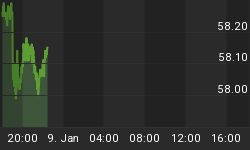As market participants continue to weigh two decisively bearish factors for oil prices—slowing oil demand growth and soaring non-OPEC oil supply—two potentially bullish drivers have made money managers return to buying oil in recent weeks.
The possibility of a Fed rate cut as soon as next week and the flaring-up of the Iran-West tensions in the Middle East and the world’s most important oil shipping lane, the Strait of Hormuz, resulted in hedge funds buying petroleum futures at the fastest pace in nearly a year in the most recent reporting week, according to exchange data compiled by Reuters market analyst John Kemp.
Despite the jump in bets on rising oil prices, the current overall positioning of hedge funds and other money managers points to a further upside for oil prices as the ratio of longs to shorts is still way off the highs in April 2019 and September 2018 that were followed by hefty sell-offs. Shorts are still relatively high and could prompt another short covering, while longs are not as high as earlier this year, suggesting that there is room for further buying, Kemp argues.
In the week to July 16, portfolio managers boosted their net long position—the difference between bullish and bearish bets—in the six most important oil contracts by the equivalent of 84 million barrels, to a total of 647 million barrels. Bets on rising prices, long positions, jumped by 76 million barrels, while shorts decreased by 8 million barrels in the latest reporting week, according to exchange data analyzed by Kemp.
The 84-million-barrel addition to the net long position in the six petroleum contracts was the largest weekly increase in bets on rising prices since August 2018.
The ratio of longs to shorts in WTI Crude and Brent Crude increased to 4.33 in the week to July 16, up from 3.82 in the previous week and a recent low of 3.64 on June 18.
In WTI Crude, money managers boosted their bets on rising prices by the most in four months to their highest level since the end of May, according to exchange data compiled by Bloomberg. Related: Mining Major Sets Aside $400 Million To Reduce Emissions
The increased buying in the past few weeks comes after nearly two months of liquidation of longs and opening of short positions as money managers—spooked by gloomy outlooks for the global economy and oil demand growth—continued to amass shorts and cut longs in oil.
At the end of May and early June, the oil market turned decisively bearish as fears of slowing global economy and oil demand growth intensified. Analysts began to warn that this year’s oil demand growth could be the lowest in years and speculators started to intensify the sell-off in the petroleum complex.
That sell-off came to a halt in the middle of June, when tensions in the Middle East began to ratchet up again.
In late June and in the first half of July, market participants and money managers continued to weigh the bearish factors—slowing demand growth and surging U.S. oil production—against the bullish factors such as rising geopolitical risks and a dovish Fed that may cut interest rates, leading to weaker U.S. dollar against other currencies that would make oil cheaper for the large crude importing nations in Asia and spur buying in commodities traded in dollars.
No one dares brush aside the bearish factors, especially with recent downgrades of oil demand growth forecasts, but the monetary policies of the U.S. and other major economies and the geopolitical risk premium have made hedge funds and other money managers more bullish on oil over the past weeks, especially compared to the decisively bearish sentiment that had gripped the market at the end of May and the first half of June.
Related: Climate Change Turns Mammoths Into $40M Market
The positioning of the hedge funds, with longs still way below recent highs, suggests that there is a lot of room for prices to run, that is, if the worst of the demand fears don’t materialize.
Concerns about slowing economies and oil demand growth, coupled with a stubborn oil glut despite OPEC’s cuts (and due to U.S. shale), are capping price gains even as Iran seized a British oil tanker in the Strait of Hormuz, where daily oil flow averaged 21 million bpd in 2018, or the equivalent of about 21 percent of global petroleum liquids consumption.
If the Fed and other central banks cut interest rates to spur economic growth, this could boost oil demand growth and instill bullishness in a market which has been heavily weighed down by fears of demand slowdown. Current hedge fund positions in oil futures also point to risks tilted to the upside.
By Tsvetana Paraskova for Oilprice.com
More Top Reads From Safehaven.com

















